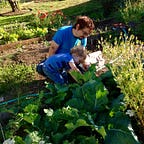Don’t Eat Poison Hemlock
Poison Hemlock (Conium maculatum) kills people every year who mistake it for closely related wild edibles.
It’s a member of the Apiaceae family of plants, which also includes wild carrot (Daucus carota, the same species as domestic carrot, actually), parsley, cilantro, celery, anise, cumin, dill, fennel, and lots of other delicious items.
Unfortunately, a not insignificant portion of the wild members of this family aren’t just poisonous, but deadly. Poison Hemlock, Water Hemlock (Cicuta spp.), Giant Hogweed (Heracleum mantegazzianum) and more. Beginners to the art of Finding should be especially careful when it comes to Apiaceae.
Poison Hemlock is one of the most widespread “weeds,” especially in urban areas and parks where kids like to play. It likes to hang out in poor soil and thrives along the edges of forests. It’s found world-wide, in almost every state in the U.S., and prefers to hang out in sunny areas but will certainly tolerate dappled shade.
It’s not an unattractive plant, and some butterflies and predatory wasps use it as a food source. However, removal is recommended when it encroaches (gloves should be worn when pulling, as wild plants in this family contain toxins which can cause painful skin reactions, rashes, and worse).
Identifying wild Apiaceae by their leaves is difficult for beginners. However, Poison Hemlock is fairly easy to identify once it begins stemming out. The smooth stems are covered with reddish purple blotches. The stems are hollow and reportedly have an unpleasant smell (although depending on the subjective nature of the odor is probably a bad idea — I think it kind of smells good).
The loosely clustered flowers are on terminal umbels (like a 3-D menorah, or upside-down umbrella).
It’s especially dangerous to amateur Finders when in its young rosette stage, when it can appear virtually indistinguishable from wild carrot/Queen Anne’s Lace. What’s even more confusing is that they often grow side-by-side.
Here’s a baby Poison Hemlock:
Here’s a baby Queen Anne’s Lace:
Can you see the difference? Are you certain you could tell them apart if they were right next to one another in a field of hundreds of them?
Remember: Queen Anne has hairy legs. Wild carrot has hairs on its stems, even at this early stage, and also smells like carrot. Wild carrot also has solid stems whereas Poison Hemlock’s stems are hollow.
We still recommend not risking it unless you’ve observed the plant and its neighbors. Wild plants are different in different environments.
